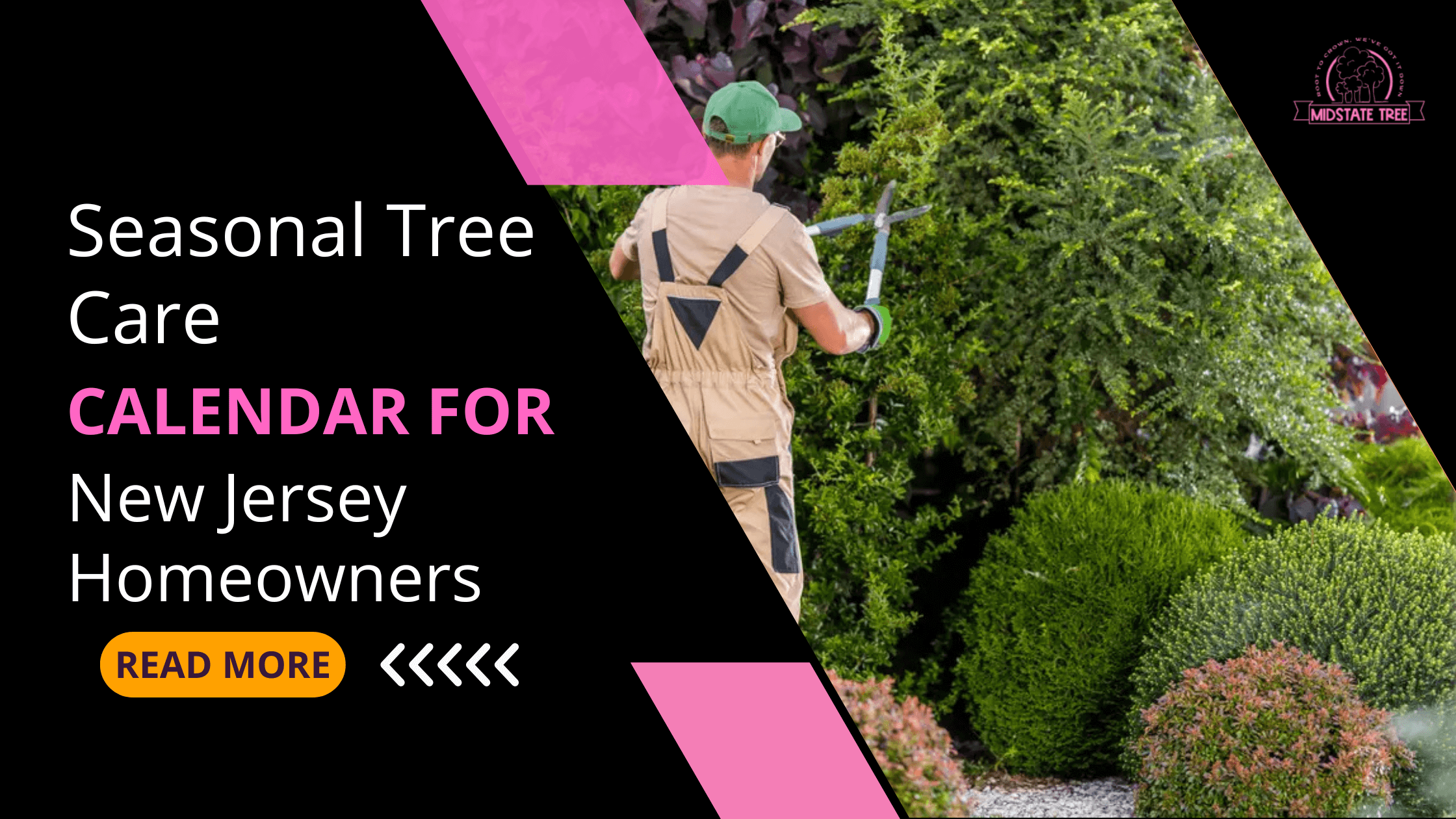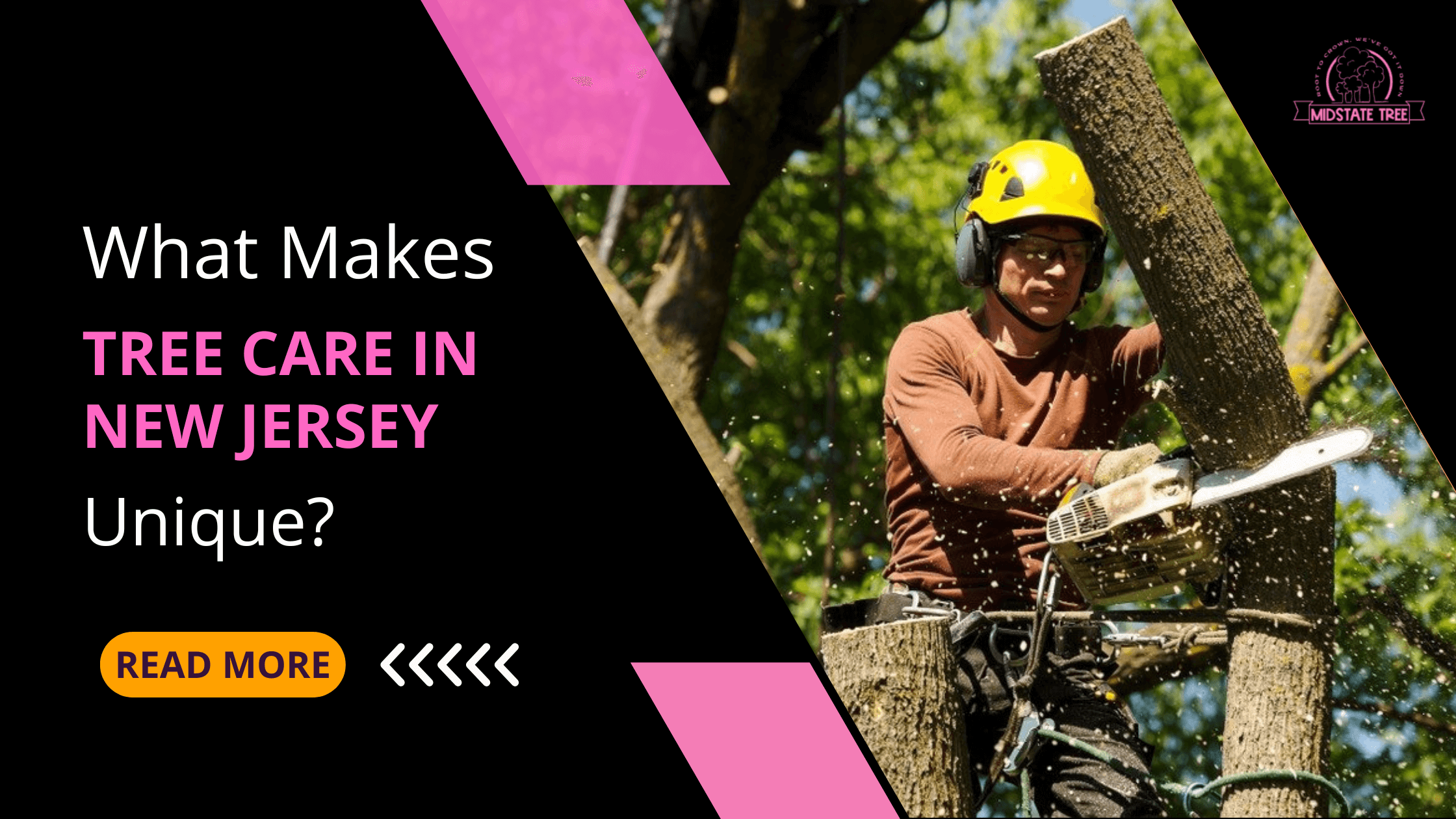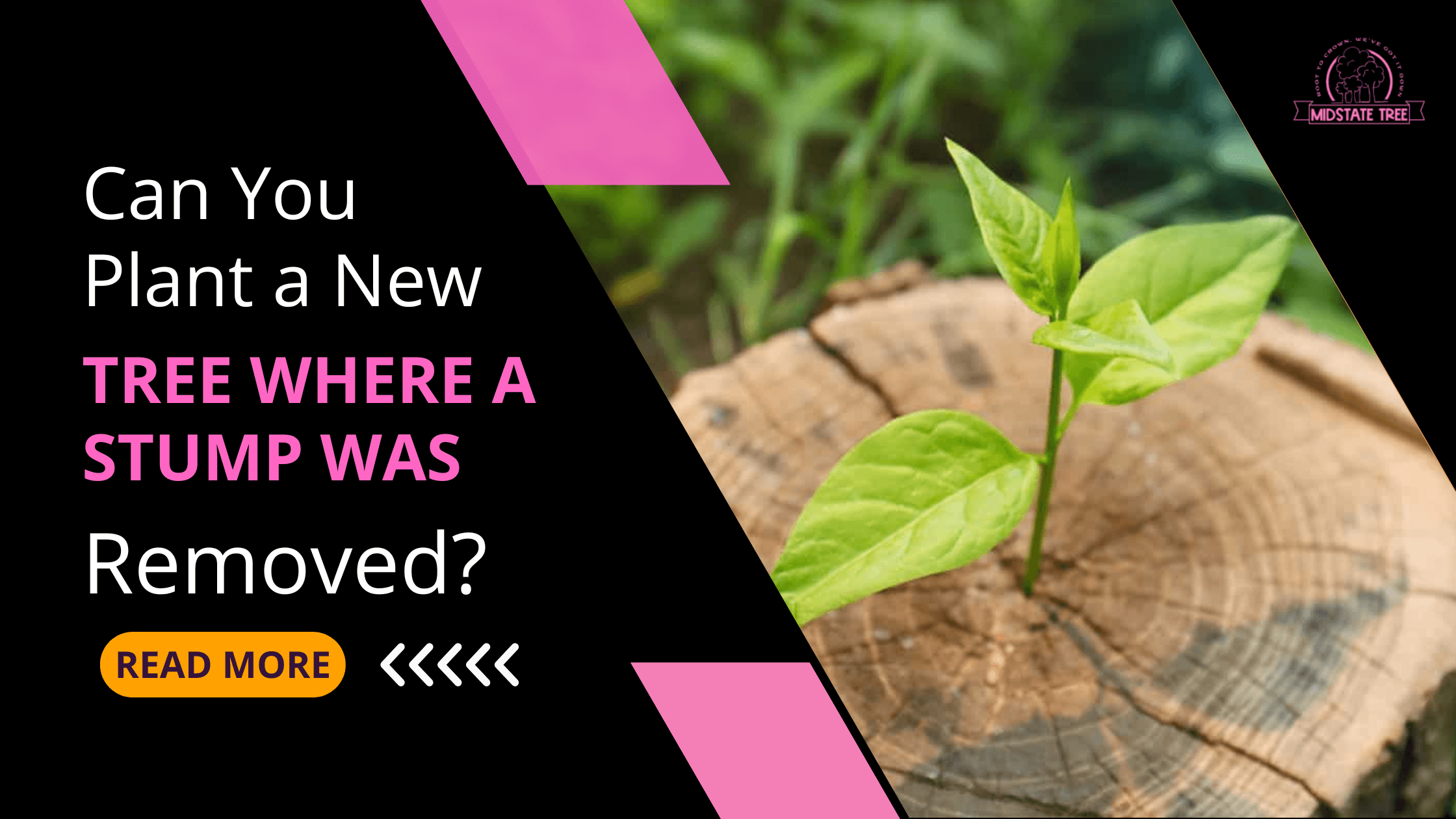If your tree shows signs like leaning, root rot, dead branches, or trunk cracks—it might be time for emergency removal. In New Jersey, especially after storms or long wet seasons, trees can become unstable fast. Whether it’s a rotting base or signs of emerald ash borer, acting early can prevent serious damage.
Let’s walk through the most urgent symptoms, explain what they mean, and help you figure out if your tree is a risk to your home, your family, or your neighborhood.
Why Removing a Dangerous Tree Is So Important
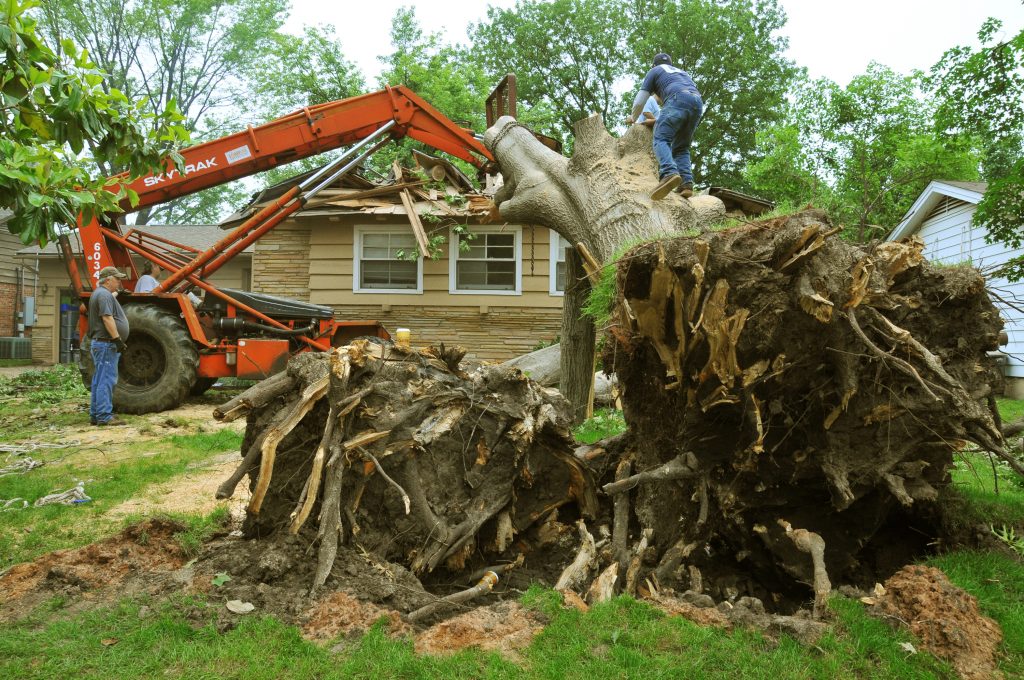
Living in a place like New Jersey—especially in areas like Warren and Hunterdon Counties—means you’re surrounded by a lot of trees.
They add beauty, shade, and even help keep your energy bills down in the summer. But sometimes, that big old oak in the yard isn’t just a peaceful backdrop anymore—it’s a threat.
When a tree becomes unstable, it’s not just “something to deal with later.” It’s a real-time danger. A single branch can weigh hundreds of pounds.
If that branch snaps off and falls during a storm—or even on a calm day—it can damage your home, your car, or worse, hurt someone.
Here’s what can happen when a risky tree is ignored:
1. It Can Damage Your Roof, Siding, or Windows
A large limb falling from even just 15 feet can crush a car or smash through your roof. Storm-damaged trees with dead branches are more likely to break apart during high winds, especially during nor’easters, which we see often in NJ.
Even small trees too close to your home can scrape against the siding and wear it down over time.
2. Falling Trees Can Destroy Vehicles
Driveways and street-side parking spots are often shaded by mature maples, oaks, or pines. These are the same trees that lose massive limbs in storms.
Falling debris can dent hoods, shatter windshields, or completely total a vehicle. And if the tree was known to be dangerous, your insurance may not cover it.
3. They Pose a Serious Safety Hazard to People and Pets
Let’s be honest: no one expects a tree to fall until it’s already crashing down. But it happens fast and without warning. Kids playing in the yard, dogs chasing squirrels, or someone walking to the mailbox can all be in harm’s way if a trunk gives out or a large branch drops.
These are the kind of accidents that turn tragic quickly—and often could’ve been prevented.
4. They Can Knock Out Power or Utility Lines
In neighborhoods with above-ground utility lines, trees brushing up against the wires—or worse, pulling them down—can knock out power not just to your home, but to the entire block.
During winter ice storms or summer thunderstorms, that’s more than an inconvenience. It can leave homes without heat or AC for days.
5. You Could Be Legally and Financially Liable
Here’s the part most homeowners don’t realize: If your tree falls and causes damage—especially if it was already in poor condition—you may be held responsible.
That’s right. Insurance companies often look at whether the tree was a “known hazard.” If it was leaning, dead, or clearly decaying, and you didn’t take action, they might not cover the claim. And if it falls on a neighbor’s property? Now you’re potentially looking at a lawsuit.
6. Healthy-Looking Trees Aren’t Always Safe
This one surprises people: not all dangerous trees look dangerous. Internal decay, root rot, or pests like the emerald ash borer can hollow out a tree from the inside. A tree may be standing tall and leafy on the outside—but one strong wind gust or a heavy snow load could bring it down.
That’s why tree experts use special tools like resistographs or sonic tomographs to detect hidden decay.
7. NJ Weather Makes Trees Even More Unpredictable
Between late summer thunderstorms, coastal winds, and heavy snowstorms, New Jersey trees are exposed to all kinds of stress. After big rain events, the soil gets saturated and shallow-rooted trees like silver maples or white pines are at high risk for tipping over—what arborists call “windthrow.”
Even drought can weaken a tree’s root system, making it more vulnerable when storms hit.
8. Urban and Suburban Growth Has Changed Tree Safety
In neighborhoods like Clinton, Flemington, and Hackettstown, homes are being built closer together. That means the trees that were once standing freely in a wide backyard are now looming over fences, driveways, or garages. What used to be just a big tree is now a potential hazard with nowhere safe to fall.
13 Urgent Signs a Tree Needs to Be Removed Immediately
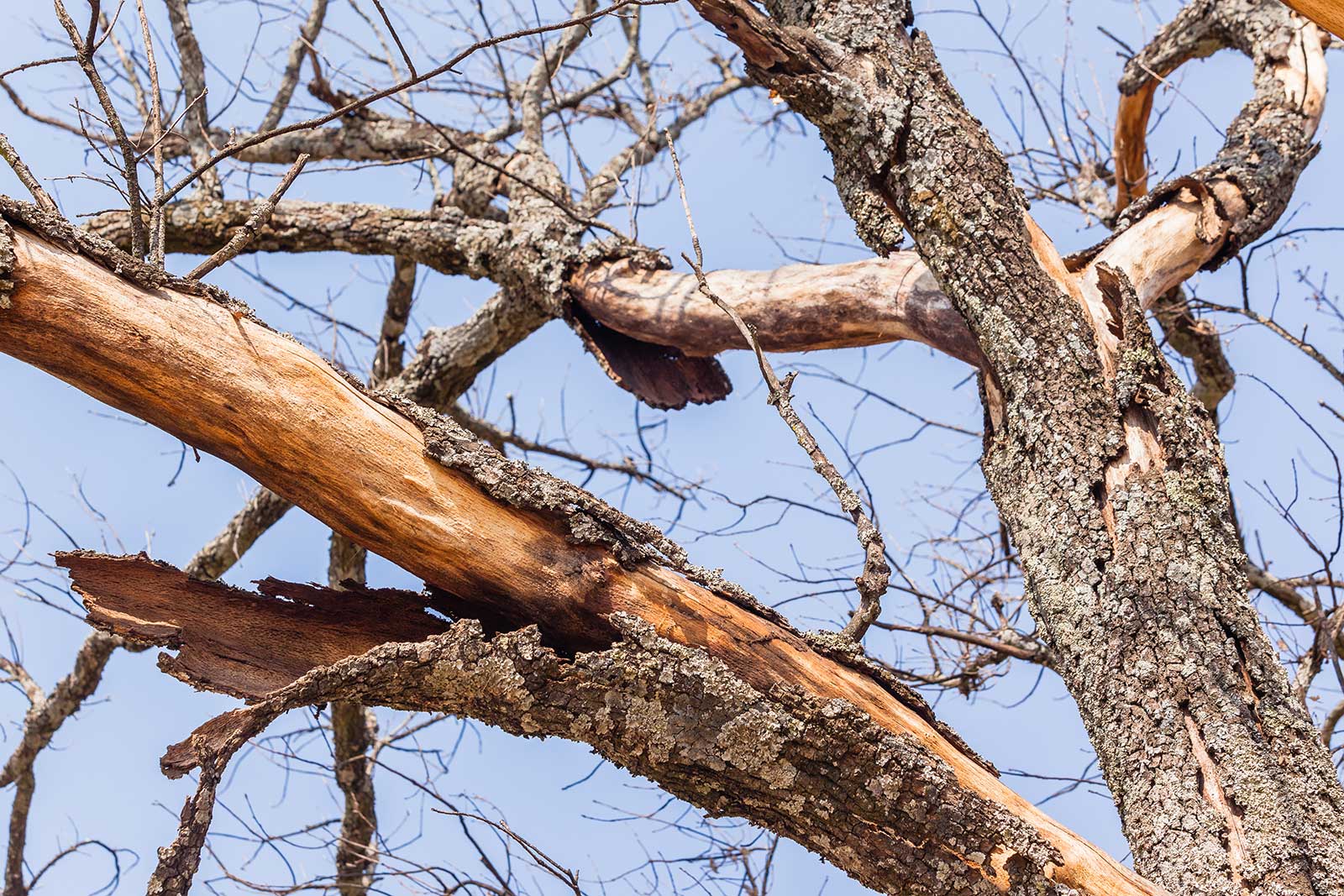
Trees might look strong from a distance, but hidden signs of decay or stress can mean they’re one windstorm away from falling. These warning signs can help you decide if it’s time to take action before the tree becomes a threat to your home, safety, or property.
1. Leaning That Wasn’t There Before
If your tree suddenly starts to lean—or if it’s leaning more than it used to—it could be losing its grip on the ground. A lean greater than 15 degrees is a serious red flag.
What to look for:
- Tree tilting to one side
- Exposed roots on the opposite side
- Cracked or heaving soil at the base
Why it’s dangerous:
A leaning tree likely has damaged or broken structural roots. In wet soil or after a nor’easter, it could fall suddenly without warning.
Don’t wait: Call a local arborist near you for a stability check, especially if the tree is near your home, driveway, or sidewalk.
2. Dead or Hanging Branches (“Widowmakers”)
Large, dead limbs hanging in the canopy—especially over your roof or yard—are serious hazards. These are often called “widowmakers” because of how deadly they can be if they fall.
What to look for:
- Dry, brittle branches with no leaves
- Bark falling off limbs
- Branches that broke but are still hanging
Why it’s dangerous:
Dead limbs can fall even on calm days. Strong winds or ice can break them loose, damaging property or injuring people below.
Action tip: Get a tree professional to remove hazardous limbs or assess the entire tree for structural integrity.
3. Cracks or Splits in the Trunk
Long cracks or deep splits running down the trunk or main limbs can indicate that a tree is literally coming apart from the inside.
What to look for:
- Vertical cracks in the bark
- Separation at branch junctions
- Holes or gaps in the main trunk
Why it’s dangerous:
Cracks are often caused by internal decay, storm stress, or poor branch structure (especially in species like Bradford pear). These can lead to sudden limb or trunk failure.
📍 In New Jersey, cracked Bradford pears are a common post-storm emergency. Don’t delay.
4. Heaving Soil or Raised Roots
When roots lift or soil around the base of the tree starts to shift, it usually means the tree’s anchoring system is failing.
What to look for:
- Soil mounding or cracking on one side
- Large surface roots becoming exposed
- Tree slightly tilting or rocking in wind
Why it’s dangerous:
This is a classic sign of root plate failure. A tree with compromised roots can topple without warning, especially in wet or windy conditions.
Get this checked by a certified arborist—especially for shallow-rooted species like white pine or silver maple.
5. Fungal Growth at the Base or on the Trunk
Mushrooms or fungal conks growing on your tree are not good news—they often signal internal decay that weakens structural wood.
What to look for:
- Shelf-like conks (Ganoderma)
- Soft, spongey bark near the base
- Mushrooms circling the root flare
Why it’s dangerous:
Fungi like Ganoderma applanatum or Kretzschmaria deusta eat away at the tree’s heartwood. The trunk may still look fine—but it’s hollowing out inside.
🍄 Fungal signs mean it’s time for a professional risk evaluation.
6. Loss of Bark or Deep Cankers
Healthy bark protects a tree like skin protects our body. When large sections of bark peel away or cankers form, it leaves the tree vulnerable to insects, disease, and decay.
What to look for:
- Bare patches with exposed wood
- Sunken or discolored areas (cankers)
- Oozing sap or fungal growth
Why it’s dangerous:
Trees with missing bark or open wounds are often structurally unsound and prone to failure during storms.
📌 In NJ maples and oaks, these symptoms can follow fungal infection or frost cracking.
7. Sprouts Growing from the Trunk or Base
If your tree suddenly sprouts new growth at the bottom or along the trunk, it may be in survival mode due to stress or trauma.
What to look for:
- Clusters of thin shoots at the trunk base
- Shoots growing from previously pruned stubs
- Sudden leafing low on the trunk
Why it’s dangerous:
This “epicormic growth” often means the tree is declining internally, and trying to compensate.
🚨 Call a tree expert. These sprouts often follow storm damage, over-pruning, or root injury.
8. Sudden or Severe Leaf Loss
Trees naturally shed leaves, but if they lose all their foliage during spring or summer—or only part of the canopy is alive—it points to serious internal decline.
What to look for:
- Bare upper limbs with green lower branches
- Delayed or no budding in spring
- Yellowing leaves early in the season
Why it’s dangerous:
Loss of leaf function often connects to root problems, drought stress, or vascular disease. A tree with less than 50% live canopy is usually beyond saving.
9. Signs of Insect Infestation
Insects don’t just eat leaves—they burrow through wood, interrupt water flow, and weaken your tree from the inside out.
What to look for:
- D-shaped exit holes (Emerald Ash Borer)
- S-shaped tunnels under bark
- Bark peeling or flecked by woodpeckers
Why it’s dangerous:
Infested trees become structurally unsound. Ash trees affected by EAB (emerald ash borer) often fall without warning.
🪲 If you see insects or damage, don’t wait—especially with ash, oak, or black cherry trees in NJ.
10. Hollow Trunk or Cavities
Trees can appear fine from the outside but be mostly hollow inside—especially older oaks and maples.
What to look for:
- Large open holes in trunk or major limbs
- Soft, punky wood around cavity edges
- Hollow sound when tapped
Why it’s dangerous:
If more than 1/3 of the trunk diameter is hollow, the tree is considered structurally compromised. Internal cavities are often caused by decay fungi or past wounds.
It’s not about how the tree looks—it’s what’s inside that counts.
11. Lightning Damage
A lightning strike doesn’t always split a tree in half immediately. Sometimes, it cooks the tree from the inside over time.
What to look for:
- Spiral splits in the bark
- Black streaks or burned areas
- Sudden dieback weeks after a storm
Why it’s dangerous:
Lightning damages the vascular system. Even if the tree survives at first, it becomes unpredictable and dangerous later.
Trees near open yards, hills, or tall roofs are common strike targets in NJ.
12. Too Close to a Structure
A tree might be healthy, but if it’s too close to your home, garage, or power lines, it can still be a hazard.
What to look for:
- Branches touching or hanging over your roof
- Roots near foundation or sewer lines
- Trunk leaning toward a structure
Why it’s dangerous:
Storms can break limbs onto your roof, or roots can damage driveways and pipes. If the tree could hit your house if it fell, it’s probably too close.
Rule of thumb: Trees should be at least 1.5 times their height away from structures.
13. The Tree Is Already Dead
If your tree isn’t growing leaves, has flaking bark, and feels dry or brittle, it’s likely dead—and that’s extremely dangerous.
What to look for:
- No leaf growth in spring
- Bark falling off in large sheets
- Brittle branches that snap easily
Why it’s dangerous:
Dead trees become dry, weak, and unstable. They can fall anytime—especially during storms—and don’t have the flexibility to withstand wind or weight.
A dead tree is a liability. It’s best to remove it before gravity does the job.
Common NJ Trees at Higher Risk of Failure
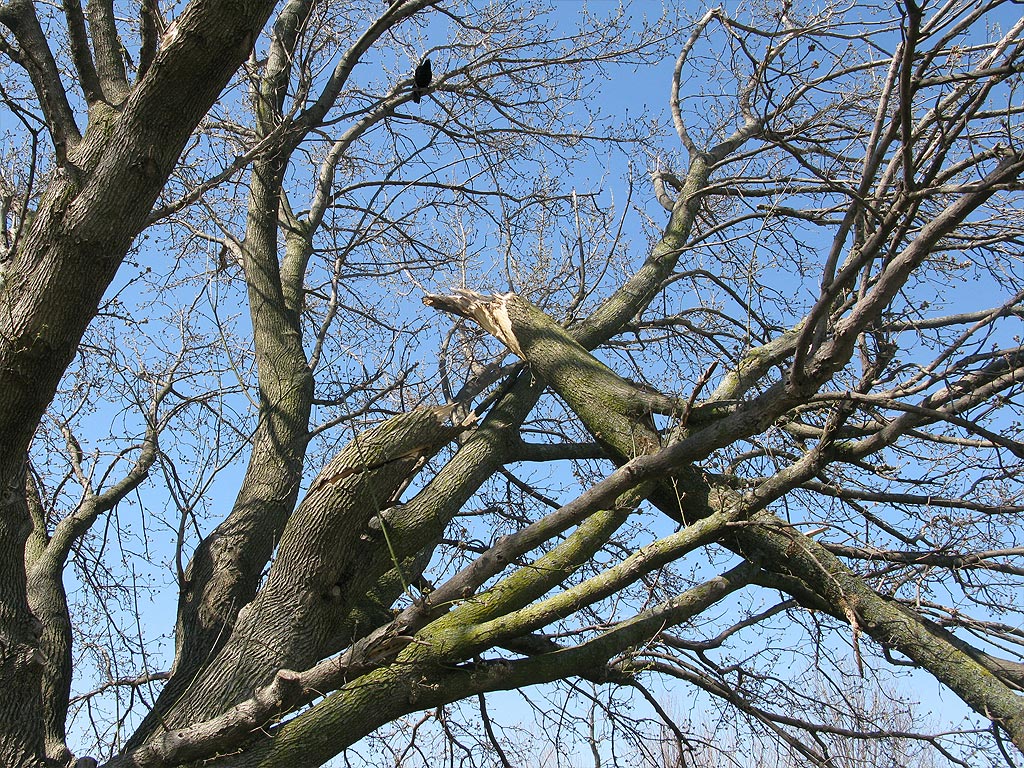
Certain species in New Jersey are more prone to structural problems:
Bradford pear – Weak branch unions, frequent storm splits
Eastern white pine – Shallow root system, windthrow
Ash – All species at risk due to emerald ash borer
Silver maple – Brittle limbs, root surface cracking
Pin oak / red oak – Leaf scorch, interior rot
Black cherry – Hidden decay, limb drop
Black locust – Prone to hollowing out internally
Trees can appear fine from the outside but be mostly hollow inside—especially older oaks and maples.
What to look for:
- Large open holes in trunk or major limbs
- Soft, punky wood around cavity edges
- Hollow sound when tapped
Why it’s dangerous:
If more than 1/3 of the trunk diameter is hollow, the tree is considered structurally compromised. Internal cavities are often caused by decay fungi or past wounds.
It’s not about how the tree looks—it’s what’s inside that counts.
What To Do If You Spot a Hazard Tree
Keep people and pets away from the tree
Take photos in case your insurance needs proof
Call an ISA-certified arborist for a risk assessment
Don’t climb or cut it yourself
Contact your town if you need permits (we handle that!)
Need same-day help? Midstate Tree is based right here in Washington, NJ and handles emergency removals 24/7.
Permits, Insurance, and Emergency Tree Work in NJ
Most NJ towns require a permit to remove large trees over a certain diameter
Insurance usually covers storm-damaged trees—but not if they were already dangerous
Trees near power lines? Call the utility company first—it’s too risky for DIY
Tree Removal Cost Factors
What affects the price?
Tree height and trunk diameter
Proximity to buildings or wires
Crane access or rigging needs
Emergency service (after hours, storms)
Stump removal or grinding
Prevention: How to Avoid Hazard Trees
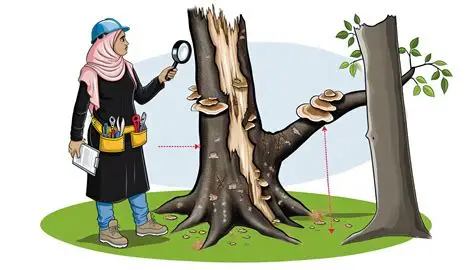
Get regular pruning and inspections
Avoid over-mulching (“volcano mulching” causes decay)
Water properly during dry spells
Treat pests like emerald ash borer early
Plant smart: choose species with strong structure
Frequently Asked Questions
Can a leaning tree be saved?
Sometimes, with bracing or corrective pruning—if caught early.
Is bark peeling always bad?
If it’s natural shedding, no. But deep bark loss or missing bark can signal decay.
How long can a dead tree stand?
Depends on species and conditions. Some may stay up for years—but could fall any time.
Can I remove a tree myself?
Not recommended. It’s dangerous, especially near structures or wires. Always call pros.
Need Help With a Risky Tree?
If your tree looks unsafe—or if you’re just not sure—get peace of mind with a professional assessment.
📍 Serving Washington, Mansfield Township, Hope, Milford, NJ, and all of Warren & Hunterdon Counties.
📞 Call 908-283-5755 for 24/7 emergency tree removal
🌐 Request a Free Quote


